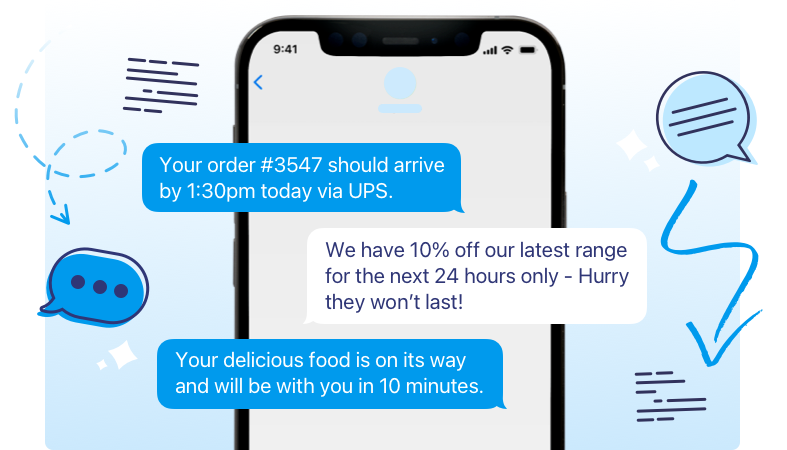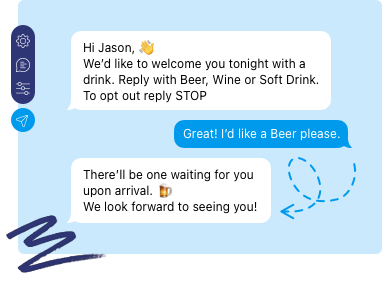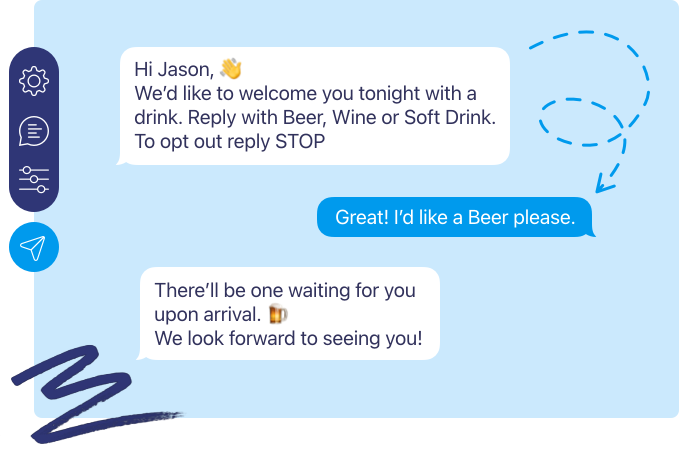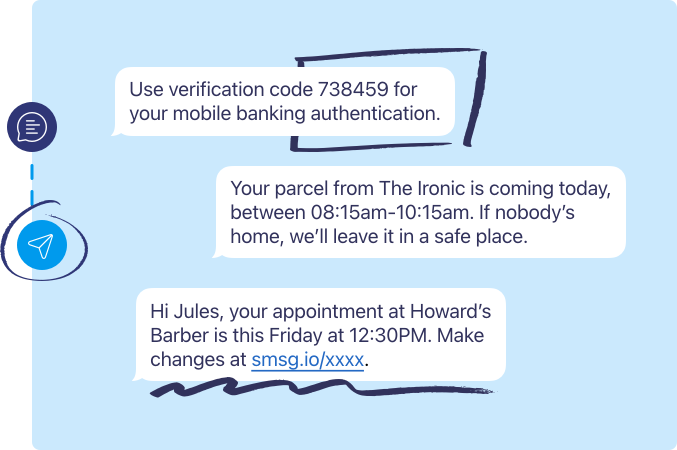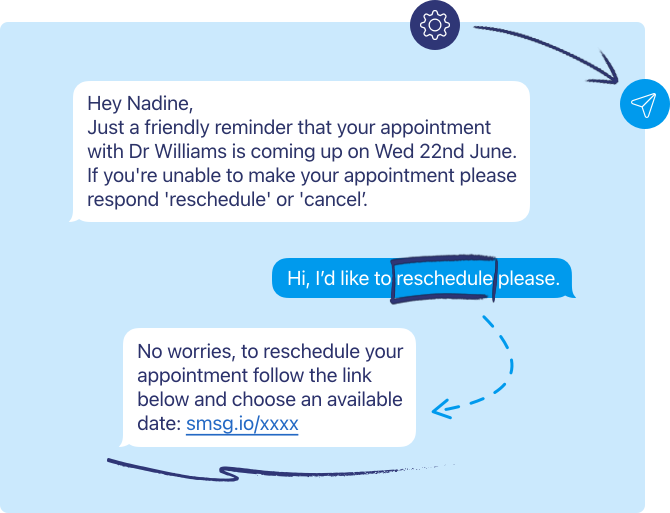Avoid the mess. Send and receive texts via a business SMS provider (yes, we mean us).
Ever tried sending texts to many people, using the default app on your cell phone? You'll see that it can get messy quite quickly.
And it's not like you can create a group chat with your customers.
The smart way to send is via a designated text service, or SMS provider. Most simply, it's powerful software created especially for fast,
high-volume message delivery. But with added features so you can do it all from your web browser. (Your thumbs will thank you.)
Our SMS service powers billions of messages every single day. Join thousands of companies who send SMS for their business
communications with us. From small businesses to global enterprises, in America and around the world.
